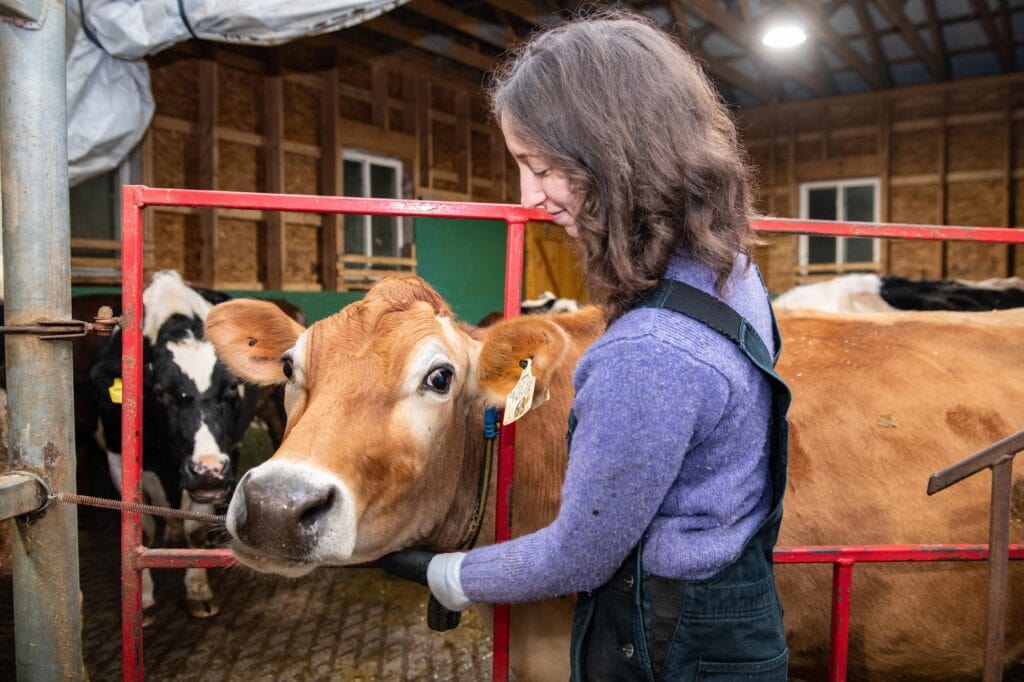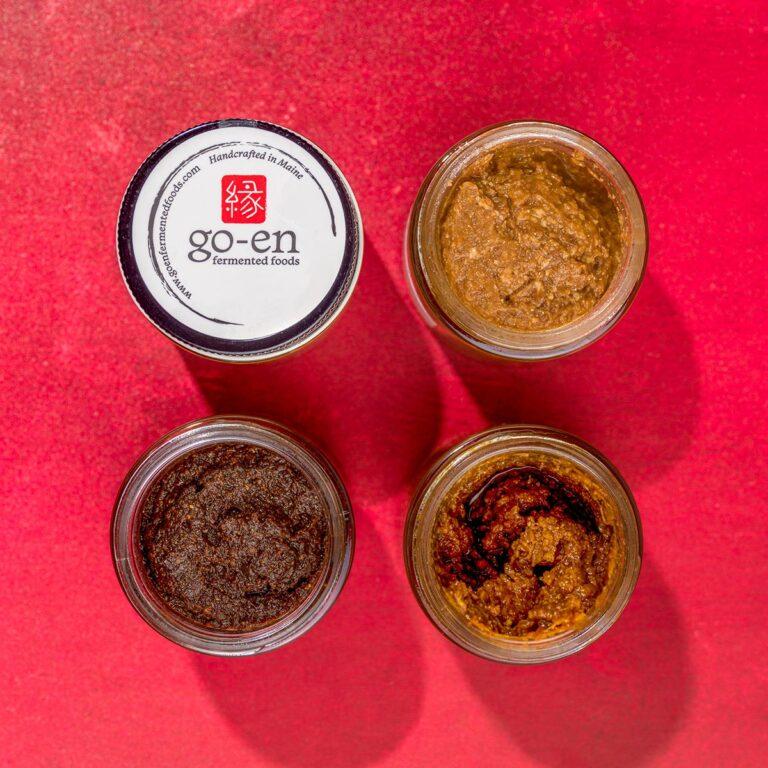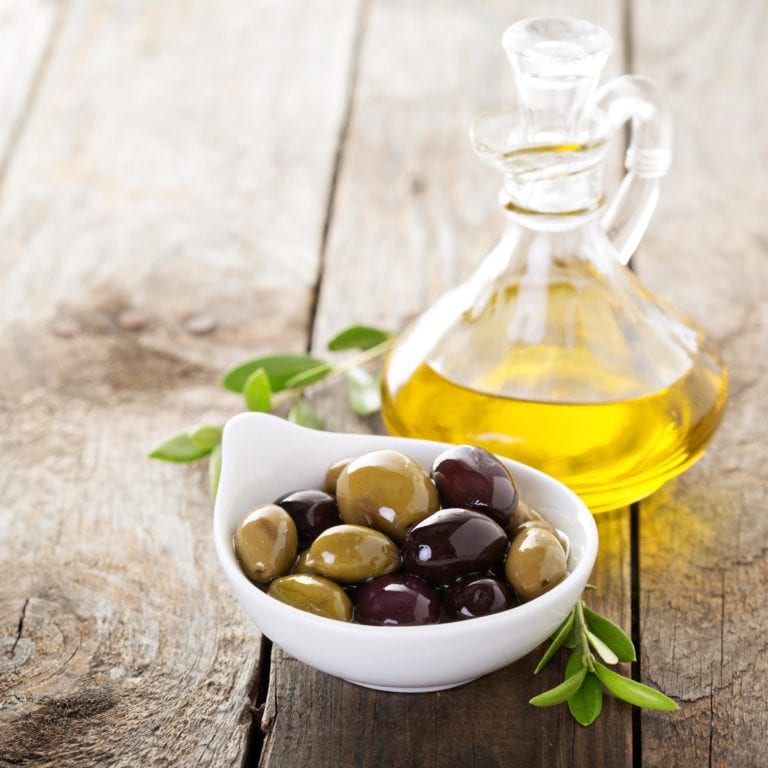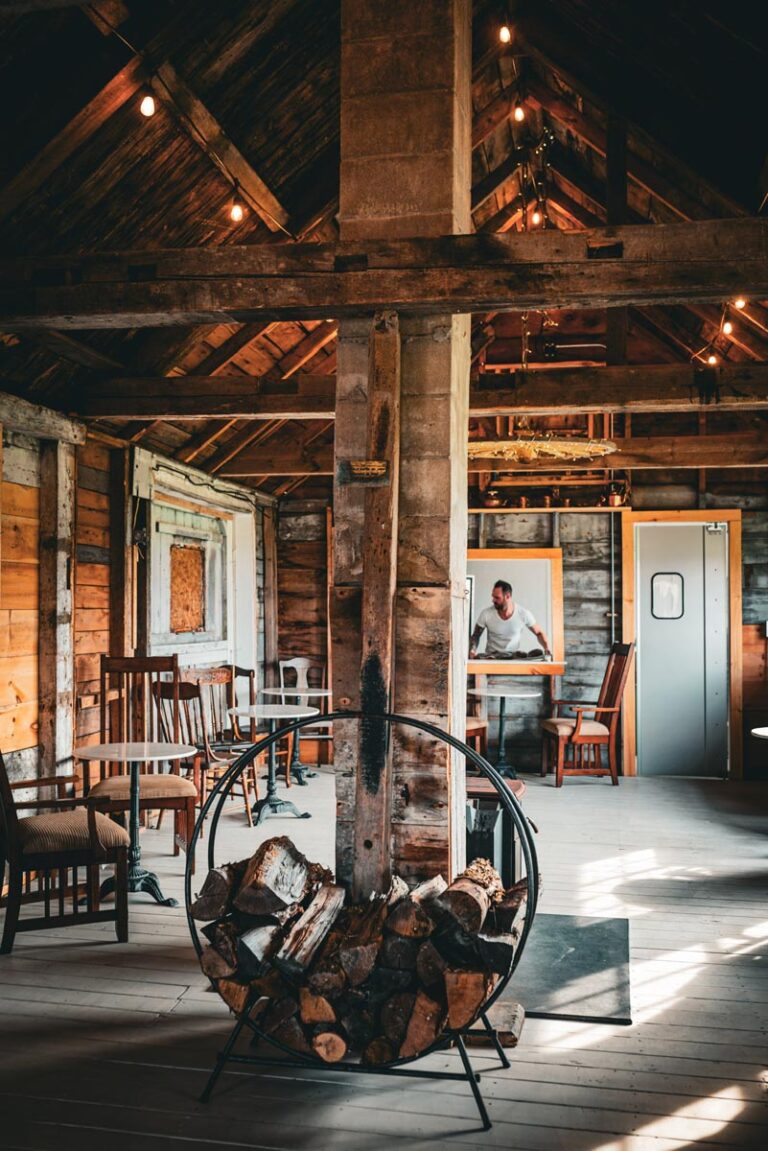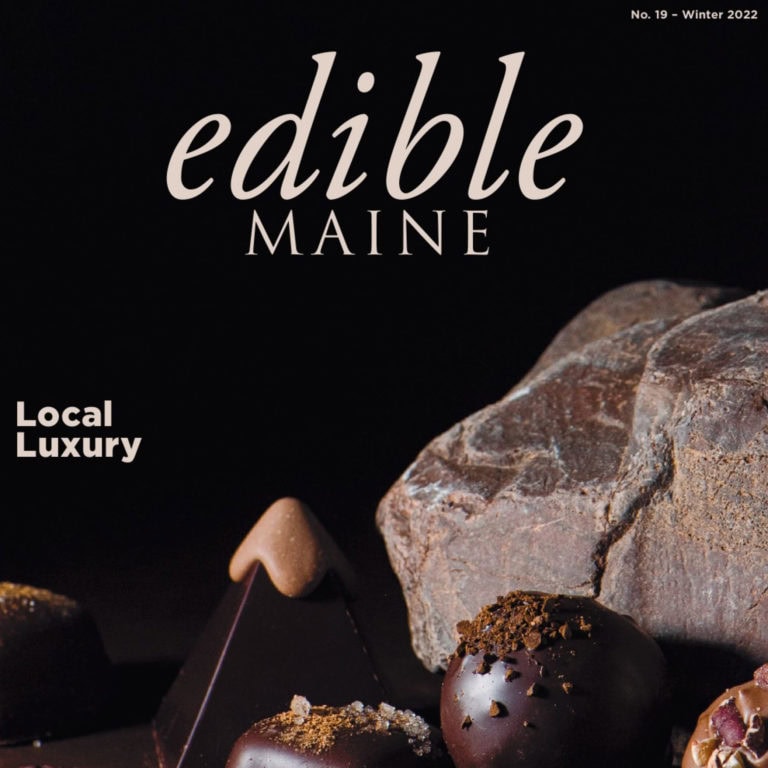The February day I set out to meet Elizabeth Tarantino at the Wolfe’s Neck Center for Agriculture and the Environment in Freeport, Midcoast Maine had just received a foot of snow. Minutes before our 5 a.m. rendezvous, Tarantino’s Subaru slipped off Burnett Road 100 feet shy of the dairy barn. As farmers do, she’d climbed out the passenger side, found a heavy chain, and fired up a tractor to fix the problem herself.
I was impressed, knowing my first call would have been to AAA and my second to Tarantino to postpone my tutorial on milking cows. It was also the moment I knew she wouldn’t be sugarcoating dairy farming for this interloper.
Manure would hit the floor. Cows would be led into gated enclosures where bodily fluid would be extracted. Udders would be exposed to cold, mechanized milking claws. Pregnant heifers would be in the mix and bottle-fed calves would be housed elsewhere. She’d tell me how many times cows birth calves in their lifetimes and talk about how they would end up as ground beef. And she’d be firm in her assertion that animals’ contributions to a sustainable food system are integral, respected, and never, ever wasted.
If you’re a milk-drinking, ice cream–licking cheese lover like me, it behooves you to understand how real dairy products would not be in our refrigerators without live animals in the frame. Luckily for us, the farmers at Wolfe’s Neck train apprentices to use regenerative agricultural practices to keep cows happy and healthy while their milk flows into the local food system.
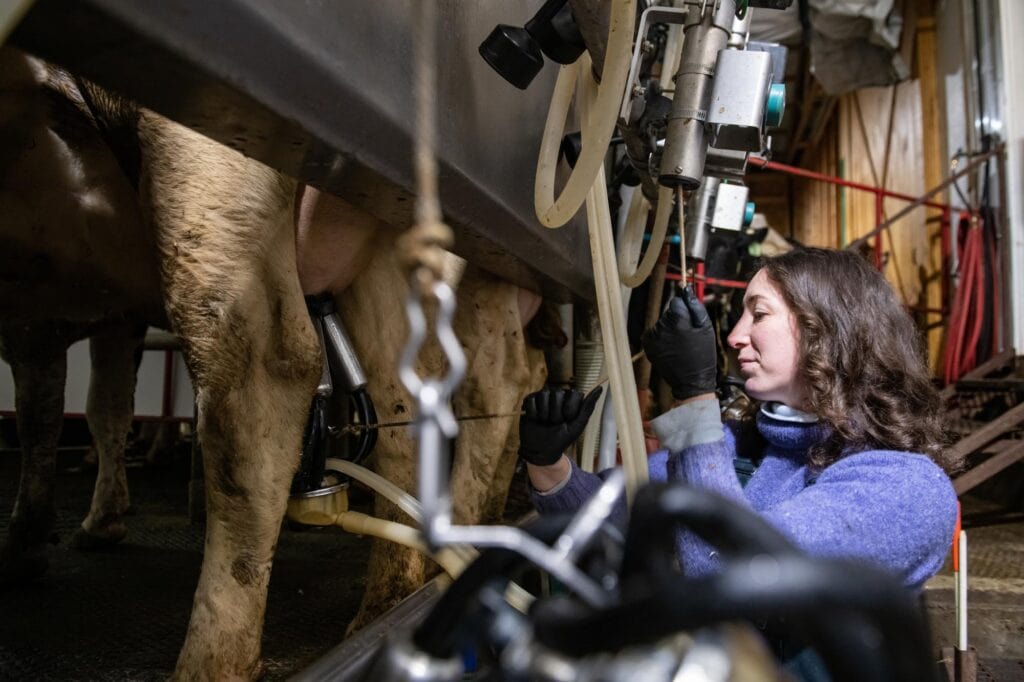
Tarantino, dairy and livestock assistant manager, leads me through a cement-floored storage room where a 1500-liter stainless steel tank shines bright under fluorescent lights. Milk taken from the farm’s mixed herd of Holsteins and Jerseys is sold exclusively to Stonyfield Organics, whose haulers collect it every other day and truck it to a facility to be made into yogurt.
Stonyfield and Wolfe’s Neck have been partners since 2014, when the company awarded the farm a $1.69 million grant to develop the Organic Dairy Research and Farmer Training Program. The money supports residential apprenticeships and enables research on regenerative grazing practices. In 2019, the farm upgraded its milking parlor and constructed a highly ventilated, compost-bedded pack barn, a setup that combines manure and sawdust to make warm bedding for the cows and nutrient-rich compost for the fields.
A whiteboard lists the tasks and chores Tarantino and the current apprentices—University of Southern Maine graduate Mark Harrington and Nebraska native Grace Codette—complete daily. It starts with turning on the sanitizer at 5 a.m. before the first milking can happen and ends with adding sawdust to the cows’ bed pack at 5:30 p.m. once the afternoon milking is complete.
We pass a viewing window (the public is invited to watch) and head into the milking parlor. We go down into the milking pit and back up from it on stairs resembling ones used to get in and out of a swimming pool. I smell cow. “The manure odor is secondary in my brain,” says Tarantino. She tunes into the smell of the organic sanitizing solution required to keep the pit regulation clean.
As she rumbles the barn door open, 30 cows lift their heads—some golden, others black and white, all with gentle, doughy eyes. They lumber up to an iron fence to feed on hay. The snow and frigid Maine winter temperatures curtail their grazing on the farm’s 28 acres of pasture, but that is where they get most of their nutrition the three other seasons of the year.
Ben Gotschall, a Nebraska rancher who moved his family and his herd of Holt Creek Jerseys to Wolfe’s Neck Farm in 2020 when he became its dairy manager, explains his two-pronged plan to make the herd genetically geared for spending lots of time on the task of grazing and to generate a diversified revenue stream for the farm.
Holsteins, while productive milk makers and popular with conventional dairy farmers, are not the best grazing animals on regenerative dairy farms due to their large size and their tendency to bunch in groups in the shade. Jerseys don’t mind spending a large portion of their days munching on a mix of grasses on pasture. Plus, while their bodies are smaller, their mouths are as large as Holsteins’. “They’re like lawn mowers and they fill up [their bellies] faster on grasses,” says Gotschall.
He is also keen to breed cows that produce milk with strictly A2 beta-casein proteins. A1 beta-casein proteins have been linked to dairy intolerance in humans. Breeding for the A2 proteins (and teaching apprentices how to do that) will let Wolfe’s Neck participate in the emerging market for A2-only milk.

Back in the Barn
As the cows come to Tarantino on this February morning to feed, she explains that the ones with blue tags on their collars are the best milkers. They get extra grain to support their efforts.
“Go on up, girls. Come on in,” she cajoles them as they move into a holding pen and wait their turn at one of the six gates that hold their heads steady and position their udders level with Tarantino’s eyes when she’s standing in the pit. Electronic sensors on their hind legs relay information about the positioned cows to the system to track the amount of milk they give up.
To hook a cow up, Tarantino first dips each of the animal’s four teats in an antimicrobial solution. She then affixes one finger of the milking claw to each teat. She flips the switch. The milking starts, the suction chugging along at a rate akin to an antique train. She repeats the process as she moves down the line.
Sometime after the two-minute mark, the claws begin to sense it’s time to release their grip. A zipline tethered to a pipe pulls them out of everyone’s way.
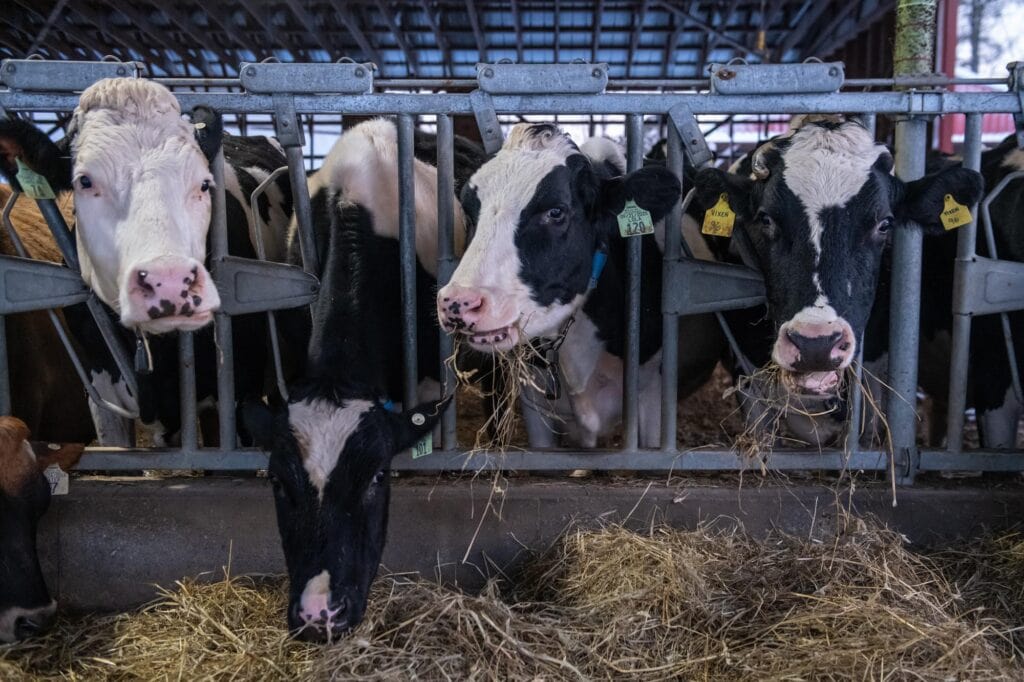
Tarantino uses a clean towel to wipe down each cow’s teats and dips them in an iodine-based solution that helps close the valve inside that lets milk flow out but serves as a barrier to pathogens. These six girls are released from their stalls and move into the barn for a bit more feeding.
As the next six file in to be milked, I ask about their seeming willingness to step up to the bar. Tarantino says the cows are creatures of habit. “But I do believe there is also some physical relief they get from the process, too,” she says.
After all cows are milked, Tarantino settles into silently scrubbing the claws with hot, soapy water.
In a blog post written the day before this milking, Gotschall, who also holds a Master of Fine Arts in poetry, explains how dairy farming relates to writing poems.
“On good days while working I think and act in poetry, as seemingly menial tasks take form and the work becomes beautiful for its own sake: the sound of a cow’s tongue tearing leaves of brome, the satisfaction of suds on stainless steel. … When it comes to poetry and farming, the same attention to detail and openness to possibility can enhance the experience – and outcome – of both, at the same time.”
I, for one, am grateful to have seen that poetry in motion.
For more information, go to wolfesneck.org.


